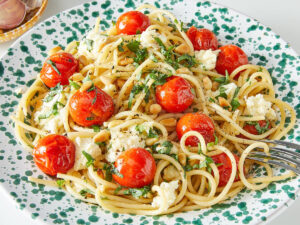In the production and processing of food, in order to give full play to the synergistic effect of various phosphates, two or more phosphates are used at the same time, known as blended phosphate. Blended phosphate is white powder, easily soluble in water, insoluble in organic solvents, aqueous solution is weakly alkaline.
Blended phosphate in food industry has function of tenderization, water holding, Loosening, shaping, improve flowing properties and chelate metal ions, etc.. In the development of food types and food processing, blended phosphate can also be used as a food improver to improve the color, flavor, taste, shape, and maintain the freshness and quality of food.
Application of blended phosphate in meat products
In the processing of meat products, the dosage of blended phosphate is often very small, but the role is very important, mainly the following five points:
- Strengthen the adhesion of meat products and improve the slicing ability of meat products.
- Chelate the metal ions in meat; increase the ionic strength of meat; delay the oxidation reaction in the processing of meat products; improve the fading phenomenon of meat products; prolong the shelf life of meat products.
- Dissociating actin, improving the water retention of meat, maintaining the tenderness and freshness of meat products and improving the meat yield.
- Improves emulsification performance and emulsion stability, effectively preventing fat and water separation.
- Adjust the pH value of meat products to give them optimal color.
The researchers obtained different ratios of complex phosphates according to different species of meat products. The best blended phosphate ratio obtained was
sodium pyrophosphate: sodium polyphosphate: sodium hexametaphosphate = 0.3%: 0.3%: 0.2%, using the longest back muscle of pigs as raw meat and using orthogonal tests to determine the water retention characteristics by measuring the cooking loss rate and other methods.
In Chicken breast Meat
For chicken breast meat, the best ratio of blended phosphate obtained by orthogonal test was sodium pyrophosphate: sodium polyphosphate: sodium hexametaphosphate = 0.3%: 0.3%: 0.2%, and it increased the tenderness while enhancing water retention.
In Beef Meat
Using beef as raw meat, different blended phosphate ratios of sodium pyrophosphate: sodium polyphosphate: sodium hexametaphosphate were obtained with a mass ratio of 2:1:1 to obtain the best water retention at 0.25% added mass.
Different raw meat contains different proteins, the optimal ratio of blended phosphate is also different. Different types of phosphates have different effects on the raw meat. For the water retention of meat products, sodium polyphosphate > sodium pyrophosphate > sodium hexametaphosphate.
Sodium pyrophosphate and sodium polyphosphate have an effect on changing the collagen structure in meat products. They can increase the tenderness of meat products, increase the protein grid space and enhance water retention.
In Ham and meatball
The addition of phosphates to ham and meatballs can change the textural properties.
The effects of sodium pyrophosphate and sodium tripolyphosphate on the textural properties of pork meatballs were investigated, and it was found that both of them could change the physical properties of pork meatballs, but the single phosphate had limitations in changing the chewiness and elasticity. Therefore, the use of blended phosphate can change the tenderness, water retention, chewiness and elasticity of meat products in many aspects.
Application of blended phosphate in pasta products
As a food improver, blended phosphate plays a role in promoting gluten toughness, reducing flour leaching, enhancing viscoelasticity of noodles and improving surface finish of noodles in the noodle making process.
It was found that the compounding of four phosphates, sodium metaphosphate, sodium tripolyphosphate, sodium pyrophosphate and sodium dihydrogen phosphate, could improve the stability time of dough, enhance the viscoelasticity and toughness of noodles, and make noodles cooked for a long time without turbiding soup. The main reason is that the strong water retention of phosphate makes the gluten protein fully absorb water and swell, which strengthens the gluten network structure.
At the same time, phosphate and soluble metal salts can generate compound salts, which can play a “bridging” role between glucose groups and promote the cross-linking of starch molecules to maintain viscoelasticity.
It was also found that blended phosphate could significantly improve the edible quality of noodles and optimized to obtain the best compounding solution of phosphate. The blended phosphate was found to significantly change the color and surface condition of the noodles, resulting in whiter and smoother noodles.
It was further found that sodium tripolyphosphate and sodium pyrophosphate could improve the whiteness of the noodles and hexametaphosphate could retard the degree of browning of the noodles. The reason may be that phosphate stabilizes the pH of the dough and chelates metal cations to inhibit oxidation, thus preventing discoloration and maintaining color. In addition, the chelating property of phosphate can prevent metal ions from precipitating and causing rough appearance of the product, and at the same time, phosphate can also form colloids with natural organic matter such as pectin and protein, thus making the surface of noodles smooth, delicate and white.
Phosphate was found to improve the gelatinization of flour, and then sodium phosphate, disodium hydrogen phosphate and dipotassium hydrogen phosphate were compounded and found to significantly increase the viscosity and improve the color of the noodles.
It was also found that phosphate was able to increase the gelatinizating temperature, peak viscosity and maintain viscosity of flour, reduce attenuation and regeneration values, as well as increase the tensile stress of fresh noodles and shear stress of noodles after cooking.
Therefore, phosphate can be used to increase the gelatinization degree of starch and improve the water absorption of starch, which in turn can improve the quality of noodles. Blended phosphate can also perform esterification and bridging between gluten protein and starch, forming a more stable complex structure, reducing starch leaching, enhancing gluten strength, and making the noodles tasty. It was found that with the increase of blended phosphate, the rate of starch leaching during cooking of noodles decreased.
In addition, the use of blended phosphate in combination with sodium stearoyl lactate, gluten, and glutamine transaminase can improve the elasticity and texture of noodles. In general, it seems that the main roles of phosphates in noodle processing are chelating metal ions, stabilizing PH, promoting the formation of gluten network structure and water-holding effect.
In the process of making noodles, it chelates the metal ions in water, reduces the hardness of water and significantly improves the noodle mixing effect; on the other hand, it strengthens the interaction between gluten protein and starch, enhances the elasticity and toughness of dough, and reduces the starch leaching during cooking, so that the quality of noodles can be improved.
In addition, the synergistic effect of blended phosphate with other substances can reduce the water activity of fresh noodles and extend the shelf life of the product.
Application of blended phosphate in seafood
Seafood refers to a very wide range, most seafood refers to products that can be eaten or used in the ocean, mainly sea animals and sea plants. Seaweeds include nostoc, seaweed, kelp, etc.; shrimps include lobster, lobster prawns, kiwis, etc. Seafood is both good for the heart and cancer prevention. For such a nutritious food, its transportation and storage are especially important.
The main roles of phosphate complexes in seafood (especially frozen seafood) are as follow:
- As water retention agent: effectively improve the water-holding capacity of seafood when thawing, making the meat juicier and reducing the loss of water and nutrients.
- As a pH regulator: reduce droplet loss after thawing, reduce weight loss and fiber toughening during boiling
- As antioxidant: effectively inhibit the oxidation of fat during processing and storage to extend the shelf life of seafood;
- As a preservative: maintain the natural color and flavor of seafood;
- As antifreeze agent: It works synergistically with sugars to effectively prevent protein denaturation of surimi products caused by low temperature environment.
Application of blended phosphate in dairy products
Complex phosphates in dairy products mainly play a stabilizing and emulsifying role, the specific role of which are:
- As a buffering agent: buffering effect, pH stabilization effect.
- As stabilizer: Combined with metal ions, it makes it possible to reduce the phenomenon of protein coagulation and precipitation during warming and preservation, and enhance the heat resistance and preservation stability of dairy products.
- As emulsifier: interacts with proteins, disperses food ingredients, stabilizes the emulsification system and effectively prevents the separation of proteins, fats and water.
- As a nutritional fortifier: fortify nutrition and improve performance.
- As pH regulator: adjusts the tissue state and improves the taste.
- As a preservation agent: Delay the occurrence of lactose coagulation and extend the shelf life of food.
Application of blended phosphate in bread processing
In the process of storage and sales, bread will age, its specific volume will become smaller, it will lose its elasticity, and it will dry and harden. Therefore, leavening agents, sweeteners, colorants, thickeners, preservatives, emulsifiers, enzyme preparations and other additives are usually added in the processing of bread to improve its quality.
Phosphate can be used as a leavening agent in bread processing, and neutralizes with alkaline substances such as sodium bicarbonate to produce a large amount of gas. Some experts found that compared with baking powder, phosphate can shorten the proofing time of bread by 3.5 hours, and at the same time improve the color and taste of bread. The main reason is that the good pH buffering effect of phosphate helps to produce gas and increase the volume of bread. Large, forming a loose and porous structure, and its water retention properties increase the water content, making the taste soft. In addition to this, phosphates are also used as flour conditioners, buffers and yeast nutrients. For example, phosphate can improve the rheological properties of the dough, adjust the pH value to keep the yeast active, and provide nutrition for the yeast cells as an inorganic salt to promote the growth and reproduction of the yeast.
In addition, polyphosphate can inhibit the growth and reproduction of some microorganisms during dough storage, and calcium dihydrogen phosphate can improve the taste and skin gloss of bread.
Phosphates commonly used in the baking industry include monocalcium phosphate, dicalcium phosphate, sodium aluminum phosphate and sodium acid pyrophosphate, and different types of phosphate react with alkali to release carbon dioxide at different rates. Therefore, phosphate can control the rate of gas production, give full play to the expansion of gas, adjust the pH of food, improve water retention, make bread form a fluffy structure, increase specific volume, reduce hardness, and improve product quality.
Other applications of blended phosphate
In addition to some common application fields mentioned above, blended phosphates are also widely used in the following food processing fields:
- Potato products: as stabilizer and color preservative, delaying browning of potato products;
- Liquor: As a color-preserving agent, adding 0.01%~0.05% Na5P3O10 to liquor can prevent discoloration of liquor products and give liquor a mellow taste;
- Refined sugar: adding Ca(3PO4)2 to clarified sucrose can promote the free flow of its molecules and prevent caking;
- Powdered foods: prevent caking and improve their free-flowing properties;
- Rice products: improve the elasticity of the products and improve the taste of the products;
- Fruit juice drinks: It can improve the juice yield, increase the viscosity, and inhibit the decomposition of vitamin C. It also has a positive effect on the storage of fruit juice drinks as a stabilizer;
- Ice cream: As emulsifier and bulking agent, it improves the expansion ability of ice cream and prevents the paste from being destroyed, while improving the taste and increasing the color;
- Canned fruits and vegetables: ions present in blended phosphates can stabilize natural pigments and protect food color and luster;
- Poultry feed: Ca(3PO4)2 is the main source of phosphorus in animal feed, used as food additive and antacid;
- Pickled food: it can improve antiseptic performance, prolong food storage period and shelf life;
The use effect of blended phosphate is comprehensively higher than that of monomer phosphate, which has positive application significance for the production, preservation and consumption of meat products, pasta, seafood, diary products, bread and some other foods.





